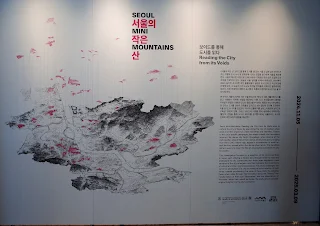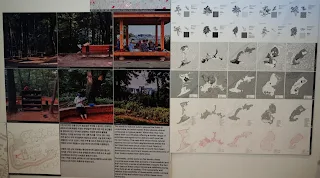A Gwanghwamun Office Worker's Lunchtime Stroll: Rediscovering the Void in the City, Seoul's Small Mountains at the Seoul Museum of History
Encountering Hidden Nature in the Heart of Seoul
Last weekend, I visited the "Seoul's Small Mountains: Reading the City Through the Void" exhibition at the Seoul Museum of History. This exhibition, which runs from November 5, 2024, to March 9, 2025, sheds new light on the small mountains hidden in the heart of Seoul and interestingly explores the coexistence of urbanization and nature. It was a perfect exhibition to stop by during lunchtime or a short break since it is free to view.
As soon as I entered the exhibition hall, my attention was drawn to the location of the small mountains marked on a map of Seoul. These spaces, called "small mountains," are mostly undeveloped areas below 200m in height. In the past, they were used as graveyards or shantytowns, but now, they have transformed into parks or recreational spaces. The fact that such natural spaces existed in the middle of a large city like Seoul was surprising, and it was even more appealing in that these spaces function as the lungs of the city.
Small Mountains, Traces of Nature in the City
The exhibition was easy to understand with the various visual aids. The maps and graphs showing the location, area, and surrounding environment of each mountain opened up a new perspective on Seoul's topography. For example, although Bangbaesan (120m) in Bangbae-dong, Seocho-gu and Maebongsan (80m) in Gangnam-gu are places we often pass by, I realized they contain traces of nature and the history of urbanization.
Also, it emphasized that small mountains are not just undeveloped spaces but important mediums connecting the past and present. While they were once a symbol of boundaries and divisions, they have now been reborn as spaces that give people rest and relaxation. One wall of the exhibition hall displayed photos of people enjoying their leisure time sitting on benches or reading books under trees in these small mountains, creating a sense of empathy and warmth.
The Value and Role of Voids (Empty Spaces)
This exhibition was planned based on a project conducted by Professor Géraldine Borio of the Department of Architecture at the University of Hong Kong and her research team. Professor Borio explored the impact of voids (empty spaces) on urban narratives and identities, deviating from the conventional perspective that views urban spaces solely as objects for development. In particular, she defined the undeveloped small mountains in downtown Seoul as "voids" and used them to show how nature and humans have coexisted during the urbanization process.
The value of voids is more than just the empty spaces left behind. They act as a mechanism through which cities can breathe, playing an important role in harmonizing nature and humans amidst the flow of urbanization. In the exhibition, you can learn about the historical background for the formation of these voids and the changing processes of their boundaries.
Unique Scenery Created by the City and Nature
Inside the exhibition hall, you could encounter the unique landscapes and stories of small mountains through photos and drawings. In particular, the visual data combined with modern digital technology added a sense of immersion for the visitors. For example, the experience of discovering new traces of nature hidden within familiar place names like Bangbaesan or Maebongsan was very refreshing.
There were also interview videos and multimedia content about the small mountains displayed on one wall of the exhibition hall, which helped visitors to immerse themselves more vividly in the stories. In particular, the scenes of people enjoying their leisure time in the small mountains and connecting with nature conveyed a hopeful message that it's possible to be connected to nature even in the city.
In Conclusion...
The ‘Seoul’s Small Mountains’ exhibition was not just about appreciating nature; it made me reflect on how humans have coexisted with nature during the urbanization process. The fact that these natural spaces still remain within a complex city like Seoul is both surprising and hopeful. It's a perfect exhibition to casually stop by during a lunch break, and the fact that admission is free is a major plus.
If you have a chance, please visit and personally experience the stories of the small mountains within Seoul at the Seoul Museum of History! And you will be able to gain new insights into the unique landscapes created by the city and nature.




